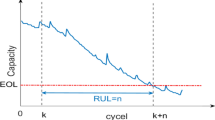Abstract
The markov prediction and analysis is a method based on markov chain theory, according to the present states and tendency of some variables, the possible states in a given period in the future will be forecasted. To determine the transition probability matrix is the crux of this method. This paper applies stochastic time series based on markov chain model to forecast the developing trends of China’s energy consumption structure under the influence of energy policy. This model is adopted to forecast the total amount of energy consumption and the trends of energy production and consumption structures. China’s energy consumption during 2006–2011 are simulated and its trends in 2015 and 2020 are forecast through this model. Results demonstrate that this model can effectively simulate and forecast the total amount and structures of primary energy consumption. Although the growth rate of energy consumption in China has decreased under the energy saving policy, but it not enough to achieve the objective of carbon reduction.


Similar content being viewed by others
References
Masseran N (2015) Markov chain model for the stochastic behaviors of wind-direction data. Energy Convers Manag 92:266–274
Scholz T, Lopes VV, Estanqueiro A (2014) A cyclic time-dependent Markov process to model daily patterns in wind turbine power production. Energy 67:557–568
Zhe Song Y (2014) Jiang, Zijun Zhang. Short-term wind speed forecasting with Markov-switching model. Appl Energy 130:103–112
Zhao W, Wang J, Haiyan L (2014) Combining forecasts of electricity consumption in China with time-varying weights updated by a high-order Markov chain model. Omega 45:80–91
Li Z, Wang W (2006) Computer aided solving the high-order transition probability matrix of the finite Markov chain. Appl Math Comput 172:267–285
Widén J, Nilsson AM, Wäckelgård E (2009) A combined Markov-chain and bottom-up approach to modelling of domestic lighting demand. Energy and Buildings 41:1001–1012
Yang H, Li Y, Lu L, Qi R (2011) First order multivariate Markov chain model for generating annual weather data for Hong Kong. Energy and Buildings 43:2371–2377
Xie N-M, Chao-Qing Y, Yang Y-J (2015) Forecasting China’s energy demand and self-sufficiency rate by grey forecasting model and Markov model. Electrical Power and Energy Systems 66:1–8
de Souzae Silva EG, Legey LFL, de Souzae Silva EA (2010) Forecasting oil price trends using wavelets and hidden Markov models. Energy Econ 32:1507–1519
Meidani H, Ghanem R (2013) Multiscale Markov models with random transitions for energy demand management. Energy and Buildings 61:267–274
Clempner JB, Poznyak AS (2015) Modeling the multi-traffic signal controlsynchronization: a Markov chains game theory approach. Eng Appl Artif Intell 43:147–156
Hemi H, Ghouili J, Cheriti A (2015) Combination of Markov chain and optimal control solved by Pontryagin’s Minimum Principle for a fuel cell/supercapacitor vehicle. Energ Conver and Manage 91:387–393
Acknowledgements
This work was supported by Natural Science Foundation of Hubei Province of China (Grant 2014CFB917).
Author information
Authors and Affiliations
Corresponding author
Rights and permissions
About this article
Cite this article
Ruan, Z., Luo, A. & Yao, H. Stochastic Time Series Analysis for Energy System Based on Markov Chain Model. Mobile Netw Appl 22, 427–434 (2017). https://doi.org/10.1007/s11036-016-0796-3
Published:
Issue Date:
DOI: https://doi.org/10.1007/s11036-016-0796-3




